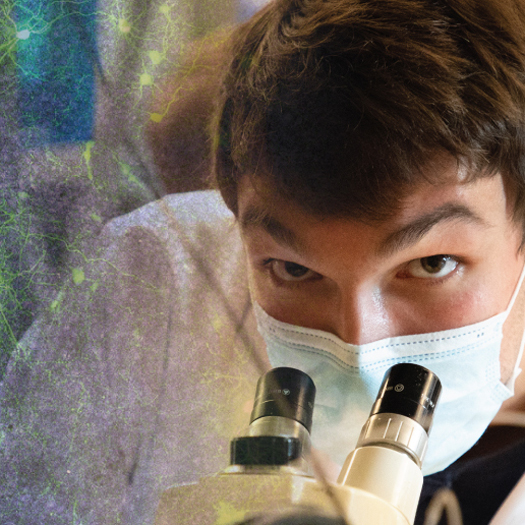Undergraduate Research Mentor: Physiological, Biophysical & Computational Neuroscience
John Gerdes
Research Professor
Contact
- Office
- SB 471E
- Phone
- 406-243-4984
- john.gerdes@umontana.edu
Personal Summary
Following a postdoctoral position at U. C. Berkeley, Dr. Gerdes joined Lawrence Berkeley National Laboratory (LBNL) as a staff scientist during 1986. In 1991 he began his industrial experience, working for ICI, Zeneca, Ltd., which was followed by a faculty post within the Department of Chemistry at Central Washington University (1995) where he was promoted to Professor with tenure in 2001. Subsequently, he joined the University of Montana, Center for Structural and Functional Neuroscience (CSFN, 2001-14) where he served as tenured Professor within the Department of Biomedical and Pharmaceutical Sciences (BMED), Skaggs School of Pharmacy, and also the Director of the CSFN Molecular Computational Core Facility. Thereafter, Dr. Gerdes joined Southern Research Institute (2014-2016) where he headed the Department of Neurobiology in addition to being the Director of the Center for Neuromolecular Research. Presently, he is a Research Professor at the University of Montana within BMED, a Visiting Professor within the Department of Radiology and Biomedical Imaging at the University of California, San Francisco and a Clinical Professor within the Department of Radiology at the University of Alabama, Birmingham.
Education
B.S. in Chemistry at Colorado State University, 1978.
Ph.D. in Chemistry from the University of California at Riverside, 1982.
Postdoctoral Fellow, University of California, Berkeley, 1982-5.
Research Interests
Our research enterprise encompasses a full spectrum of medicinal chemistry studies of central nervous system (CNS) transporter proteins, including the serotonin transporter (SERT), norepinephrine transporter (NET), select excitatory amino acid transporters (EAATs), the vesicular glutamate transporter (VGLUT) and other targets including acetylcholinesterase (AChE), mTOR-AKT, insulin brain entry and receptors (IRs), among others. Select candidate small molecule ligands are assessed as in vivo diagnostic imaging probes utlizing positron emission tomography (PET). CNS PET imaging provides abundant opportunities to utilize select radiolabeled forms of our ligands (tracers) to gain estimates of the density of the target CNS transporter proteins in living brain and spinal regions of interest. Of current focus are the assessments of key CNS transporter (SERT, NET, VGLUT and EAAT), enzyme (AChE) and key signaling interactions (mTOR, IRs) tissue density changes found across healthy wild type versus diseased state live tissues. Primate PET imaging determinations of CNS tracer tissue kinetic profiles provide several unique in vivo opportunities. For example, deeper insights of neuropharmacological dynamics associated with modes of actions of CNS therapeutic interventions may be realized. Changes to biological psychiatry circuitries associated with various mental health disorders and alterations associated with neurodegenerative disorders assessed with PET imaging provide means to facilitate diagnoses and to follow novel CNS therapies.
Field of Study
Our research encompasses a full spectrum of medicinal chemistry studies of central nervous system pre-synaptic transporter proteins, including the serotonin transporter, norepinephrine transporter and select excitatory amino acid transporters. A portion of our studies focuses upon computational modeling, involving superposition-consensus pharmacophore model generation, formation of comparative molecular field analysis (CoMFA) models, and protein homology models. Together, the various models serve as key criteria for the designs of new ligands and drugs for the transporter and enzymatic target proteins. Model designed ligand libraries are routinely synthesized in our lab and then pharmacologically evaluated for target protein binding potency. Thus, we are able to evaluate the predictive qualities of the models, and enhance the ligand pharmacological activities through iterative medicinal chemistry design affording us highly useful small molecule probes, biochemical reagents, diagnostic agents and novel therapeutic drugs. Many of the new agents are assessed in vivo. For example, select candidate drugs are fashioned as dynamic brain imaging tracers for positron emission tomography (PET). Cerebral PET imaging provides the opportunity to utilize the radiolabeled forms of our ligands (tracers) to gain estimates of the density of the target CNS transporter proteins in living brain. Primate CNS PET measures afford deeper insights into aspects of tracer neuropharmacological kinetics and dynamics, modes of actions of CNS therapeutic interventions and biological psychiatry circuitry associated with various neurological and mental health disorders.
Selected Publications
Select Papers
Huang Y, Zheng MQ, Gerdes JM. Development of Effective PET and SPECT Imaging Agents for the Serotonin Transporter: Has a Twenty-Year Journey Reached its Destination? Current Topics in Medicinal Chemistry, 10: 1499-1526 (2010).
Braden MR, Huang Y, Rider KC, Zheng M, Weinzimmer, Gerdes JM. From Molecular to Kinetic Modeling: Discovery and Development of a Novel Class of Norepinephrine Transporter PET Tracers. Journal of Nuclear Medicine 51(S1): 312P (2011).
Zheng M-Q, Gerdes J, Weinzimmer D, Ahmed S, Braden M, Lin S-F, Ropchan J, Carson RE, Huang Y. A new F-18 labeled PET tracer for the norepinephrine transporter. Journal of Nuclear Medicine, 53(S1): 75 (2012).
Gerdes JM, Zheng M-Q, Braden M, Holden D, Ropchan J, Lin S-F, Carson RE, Huang H. Novel F-18 labeled 6-nitroquipazine derivatives as high affinity tracers for the serotonin transporter. Journal of Nuclear Medicine, 53(S1): 291 (2012).
Gerdes J, Ahmed S, Dannoon S, Braden M, Bridges R, Rothstein J, Sattler R, VanBrocklin H. Discovery of a novel PET tracer for the Excitatory Amino Acid Transporter 2 (EAAT2) in the CNS. Journal of Nuclear Medicine, 53(S1): 1639 (2012).
Gerdes J, Bridges R, Braden M, Ahmed S, Patel S, VanBrocklin H, Dannoon, S, Rothstein J, Sattler R. PET imaging of the excitatory amino acid transporter 2 in an amyotrophic lateral sclerosis rat model. J Cerebral Blood Flow & Metabolism, 32(S1): 26-27 (2012).
Gerdes JM, James S, Ahmed SK, Belabassi Y, Braden MR, VanBrocklin HF, Thompson CM. A Novel High Affinity F-18 Organophosphonate Tracer for CNS Acetylcholinesterase. Journal of Nuclear Medicine 54(S2): 323 (2013).
Ahmed SK, Belabassi Y, Sankaranarayanan L, Chao C-K, Gerdes JM, Thompson CM. Synthesis and anti-cholinesterase properties of novel b- and g-substituted alkoxy organophosphates. Bioorganic and Medicinal Chemistry Letters, 23: 2048-2051 (2013).
Gerdes JM, James S, Ahmed SK, Belabassi Y, Braden MR, VanBrocklin HF, Thompson CM. A Novel High Affinity F-18 Organophosphonate Tracer for CNS Acetylcholinesterase. J of Nuclear Medicine 54(S2): 323 (2013).
Carrigan CN, Patel SA, Cox HD, Bolstas ES, Gerdes JM, Smith WE, Bridges RJ, Thompson CM. The development of benzo- and naphtho-fused quinoline-2,4-dicarboxylic acids as vesicular glutamate transporter (VGLUT) inhibitors reveals a possible role for neuroactive steroids. Bioorganic and Medicinal Chemistry Letters, 24: 850-854 (2014).
James, SL, Ahmed SK, Murphy S, Braden MR, Belaabassi Y, VanBrocklin HF, Thompson CM, Gerdes JM. A Novel Fluorine-18 β-Fluoroethoxy Organophosphate Positron Emission Tomography Imaging Tracer Targeted to Central Nervous System Acetylcholinesterase. ACS Chemical Neuroscience 5:519-524 (2014).
Gerdes J; Ahmed S; Braden M; Blecha J; VanBrocklin H. Radiosynthesis, Rodent and Non-human Primate Studies of a Novel PET Tracer for the Excitatory Amino Acid Transporter 2 (EAAT2) in the CNS. J. of Nuclear Medicine 56 (S3):1100 (2015).
Alfonsino GE; Santagati A; Baile L; Novellino E; Gaul C; Squires C; Braden M; Gerdes JM; Silanes SP; Guccione S; Parker KK. 5HT1a receptor binding affinities of a series of serotonin transporter (SERT) inhibitors and related thermodynamic insights. J. of Advances in Medical and Pharmaceutical Sciences 4:1-12 (2015).
Chao C-K; Ahmed SK; Gerdes JM and Thompson CM. The Novel Organophosphate Ligand O-(2-Fluoroethyl)-O-(p-nitrophenyl)methylphosphonate: Synthesis, Hydrolytic Stability and Analysis of the Inhibition and Reactivation of Cholinesterases. Chemical Research in Toxicology 29:1810-1817 (2016).
Neumann KD, Thompson CM; Gerdes JM; VanBrocklin HF. A Novel Radiosynthesis of the Acetylcholinesterase PET Tracer [18F]2-fluoroethyl 4-nitrophenyl methylphosphonate. Molecular Imaging and Biology (2016) in press.
Select Patents
WO 2007127262 and US Patent 7,812,162: Gerdes JM, Bolstad DB, and Kusche BR. Enantiomers of 2’-Fluoroalkyl-6-nitroquipazine as Serotonin Transporter Positron Emission Tomography Imaging Agents and Antidepressant Therapeutics. (issued 2010).
WO 2008115593 and US Patent 7,887,784: Gerdes JM, Bolstad DB, Braden MR, and Barany A. 1-[(2’-substituted)-Piperazin-1’-yl]-isoquinolines as Norepinephrine Transporter Inhibitor Agents as Antidepressants and Positron Emission Tomography Imaging Agents. (issued 2011).
US Patent 9,499,472: Gerdes JM, Bridges RJ, Ahmed SK, and Patel S. Novel Aspartylamide Inhibitors of Excitatory Amino Acid Transporters. (issued 2016).

